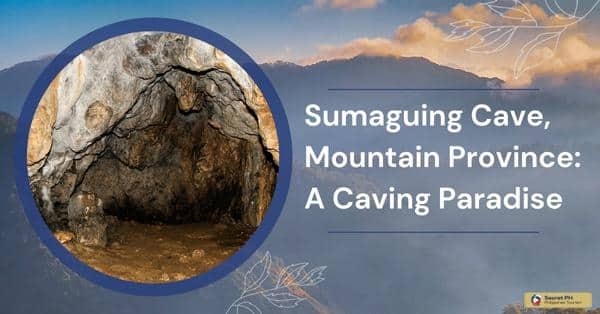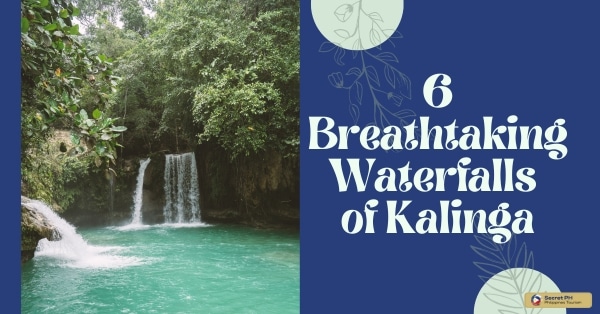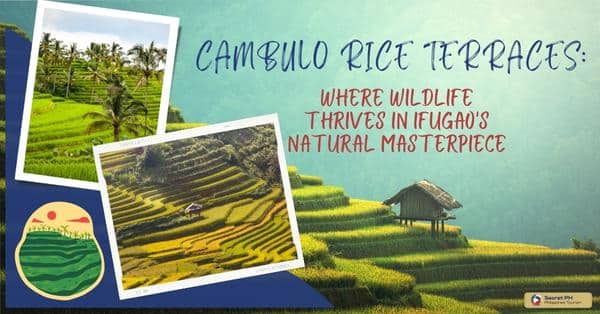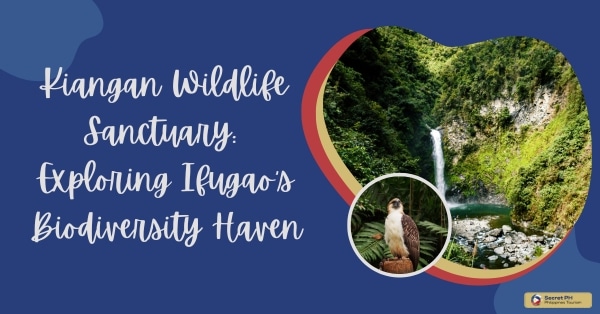The Majestic Rice Terraces of Banaue, a paradise located in the Philippines, have been recognized by UNESCO as a World Heritage Site for their stunning beauty and impressive cultural significance.
Highly cultivated by the Ifugaos people for over 2,000 years, these terraces are an example of excellent engineering methods and hard work. They are proof of a sophisticated farming technique and an extraordinary level of knowledge about the landscape used to create this landscape wonder.
Exploring these terraces is like walking into a beautiful postcard picture, filled with lush vegetation, winding passageways, and sparkling rivers. An appreciation of the traditional culture is essential to getting the most out of this extraordinary place; a celebration of life!
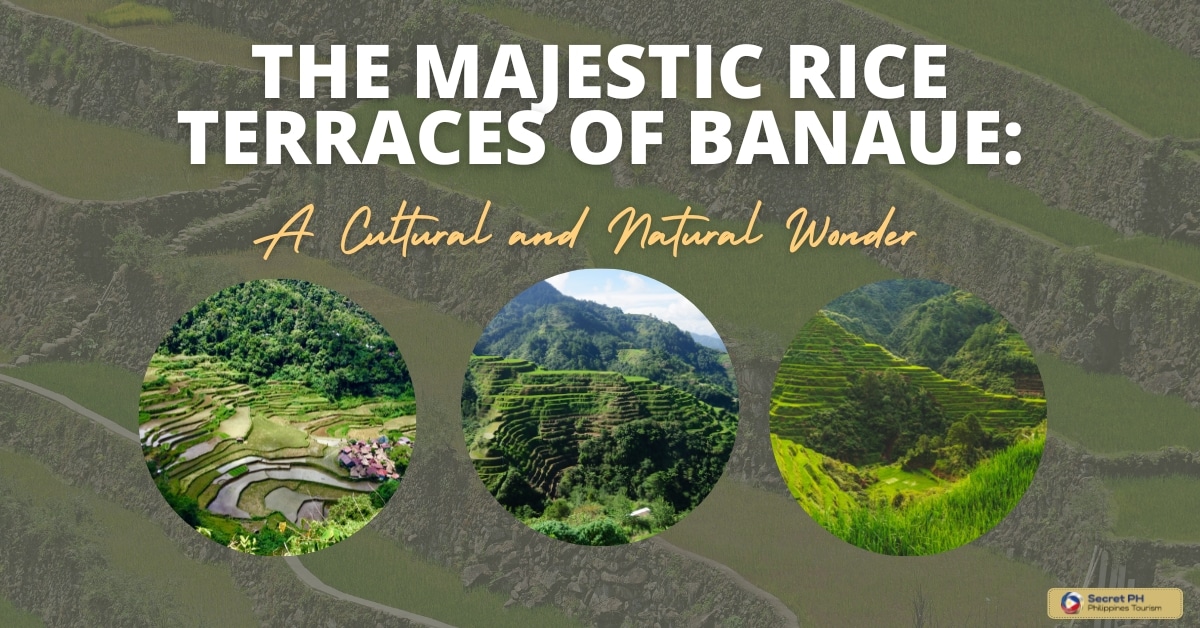
Historical and Cultural Significance of the Rice Terraces
The Banaue Rice Terraces are a stunning example of human ingenuity and natural beauty. Located in the remote areas of the Philippine Cordillera, these terraces were carved into the mountains of Banaue, Ifugao by the ancestors of the Igorot people.
The terraces are nestled in amphitheater-like semi-circular terraces with a breathtaking view that stretches for miles.
The unique characteristics and natural beauty of these terraces make them a popular tourist destination in the Philippines. Visitors can explore this incredible landscape on foot or take a tour through some of its most picturesque spots.
They can also learn about its rich cultural heritage and experience traditional Ifugao hospitality while they’re there.
The Banaue Rice Terraces are an impressive testament to human resilience and determination as well as a beautiful reminder that nature still has much to offer us if we just take the time to appreciate it. It is truly an awe-inspiring sight that should not be missed!
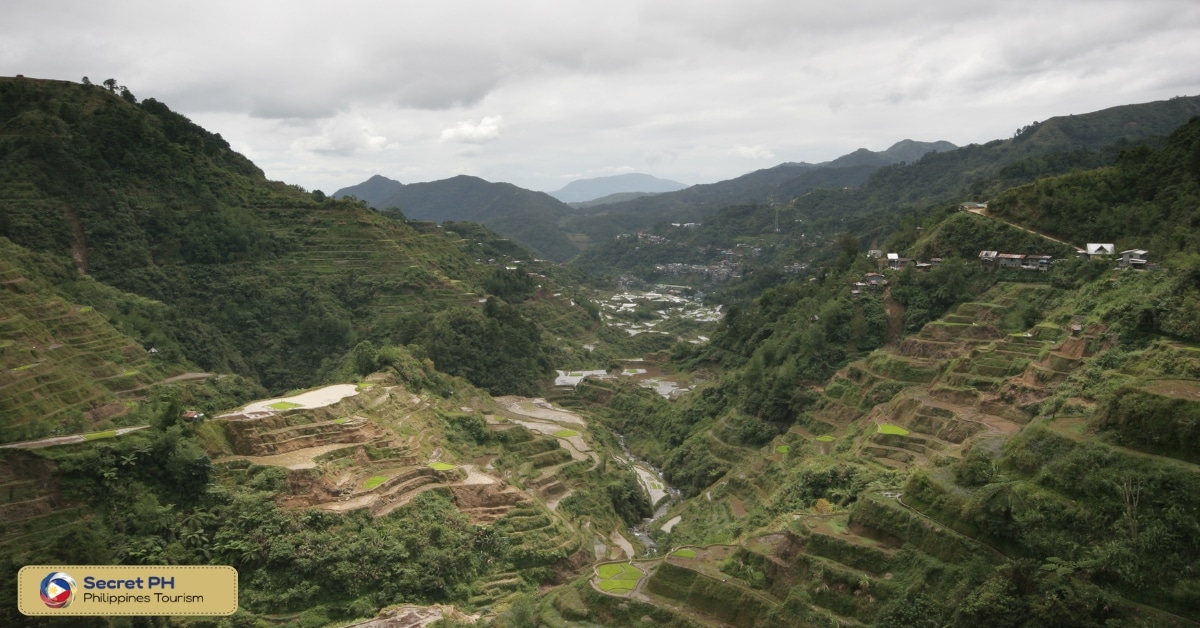
Natural Beauty and Unique Characteristics of the Terraces
The Banaue Rice Terraces in the Philippines are renowned for their breathtaking natural beauty and unique characteristics. The terraces are sprawling, tiered structures carved into the sides of mountains, stretching for thousands of square kilometers.
The impressive feat of engineering, combined with the lush green rice paddies and towering mountain backdrops, create a breathtaking and serene landscape.
The terraces are considered unique for several reasons. Firstly, their age – it is estimated that they were constructed around 2,000 years ago using traditional tools and methods, making them some of the oldest man-made structures in the world.
Secondly, the terraces are considered a marvel of engineering as they were built without the use of modern equipment and without a blueprint, relying solely on the knowledge and skill of the indigenous people.
Moreover, the terraces are irrigated using an ancient system of channels and dams that are still in use today, making them a functional and sustainable agricultural system.
This traditional method of rice farming has a minimal impact on the environment and is in harmony with the natural surroundings, adding to the terraces’ unique beauty.
In conclusion, the Banaue Rice Terraces are a truly natural and cultural wonder, offering a glimpse into the rich history, culture, and traditions of the indigenous people, while also showcasing the beauty and majesty of the Philippine countryside.
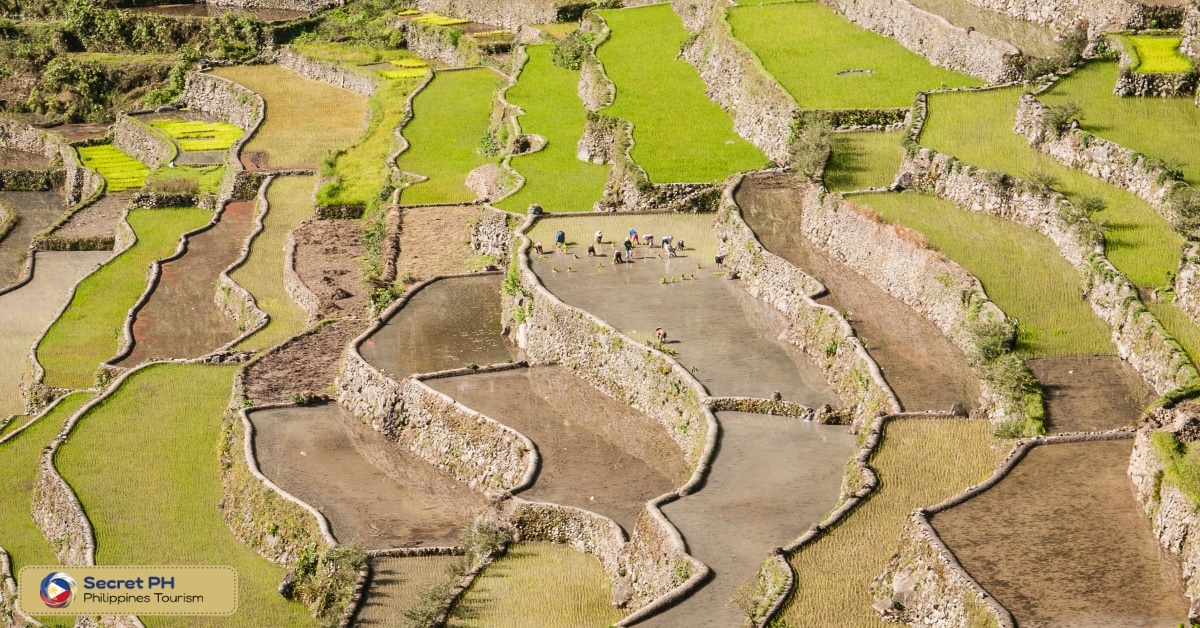
The Traditional Rice-Farming Method and its Impact on the Environment
The traditional rice-farming method used in the Banaue Rice Terraces has been in use for thousands of years and has had a minimal impact on the environment. The method involves a complex system of irrigation, utilizing channels, dams, and reservoirs to redirect water from mountain streams to the terraces. This ancient system provides the rice paddies with the necessary water to grow, while also preserving the delicate ecosystem of the surrounding area.
In addition to the sustainable irrigation system, the traditional method of rice farming is also environmentally friendly. The terraces are farmed using natural fertilizers and pesticides, reducing the number of harmful chemicals in the environment. The method also promotes crop rotation and diversity, ensuring that the soil remains fertile and the crops are not over-farmed.
Furthermore, the traditional method of rice farming creates a landscape that is in harmony with the surrounding natural environment. The terraces blend seamlessly into the mountain landscape, creating a picturesque and peaceful environment that supports not only the local farmers but also a variety of wildlife and plant species.
Overall, the traditional rice-farming method used in the Banaue Rice Terraces is a prime example of sustainable agriculture and is a testament to the ingenuity and wisdom of the indigenous people. The method has been successfully in use for thousands of years and continues to preserve the delicate balance between human activities and the natural environment.
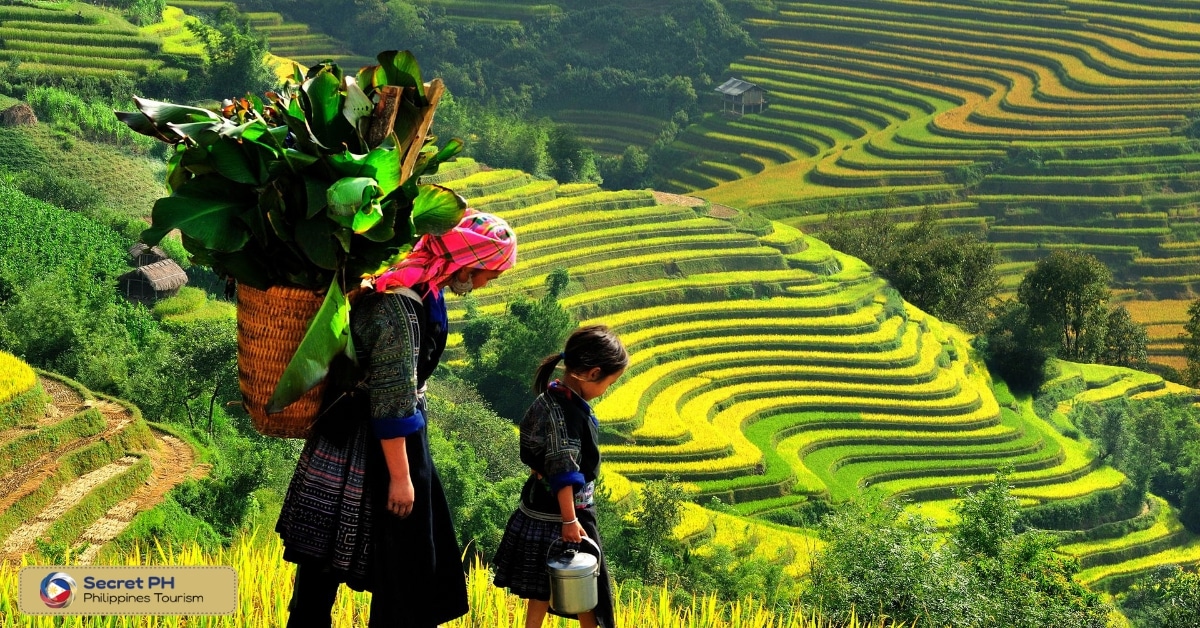
Tourist Attractions and Activities in the Banaue Area
The Banaue Rice Terraces are not the only attraction in this beautiful area of the Philippines. Visitors to the area can enjoy a range of activities such as hiking, mountaineering, bird watching, and camping. For those looking for more leisurely pursuits, there is an array of cultural activities that include visiting Ifugao villages and experiencing their traditional lifestyle.
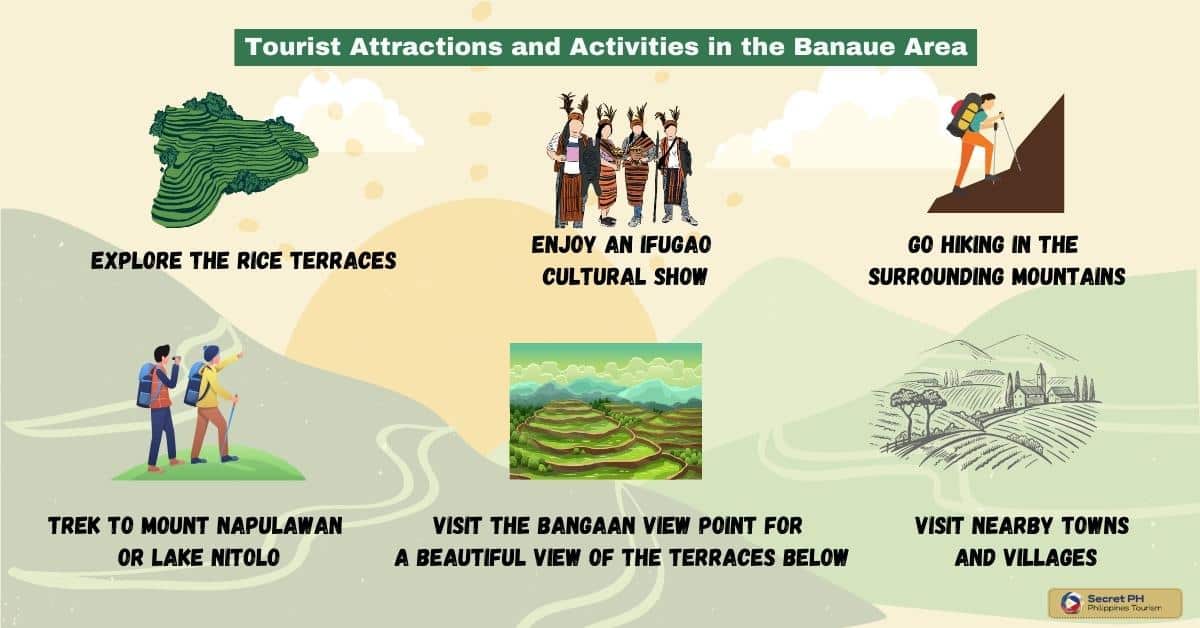
1. Explore the Rice Terraces
The Banaue Rice Terraces are a worthwhile experience for anyone looking to explore the natural beauty of this region. From viewing its incredible panoramic view on top of the mountain or trekking along the terraces at ground level, visitors will be treated to stunning views and memorable experiences.
2. Visit nearby towns and villages
Another great activity for visitors to the area is to explore the nearby towns and villages. These villages are incredibly diverse, holding a wealth of culture and tradition that will give you a unique insight into this region’s history and way of life.
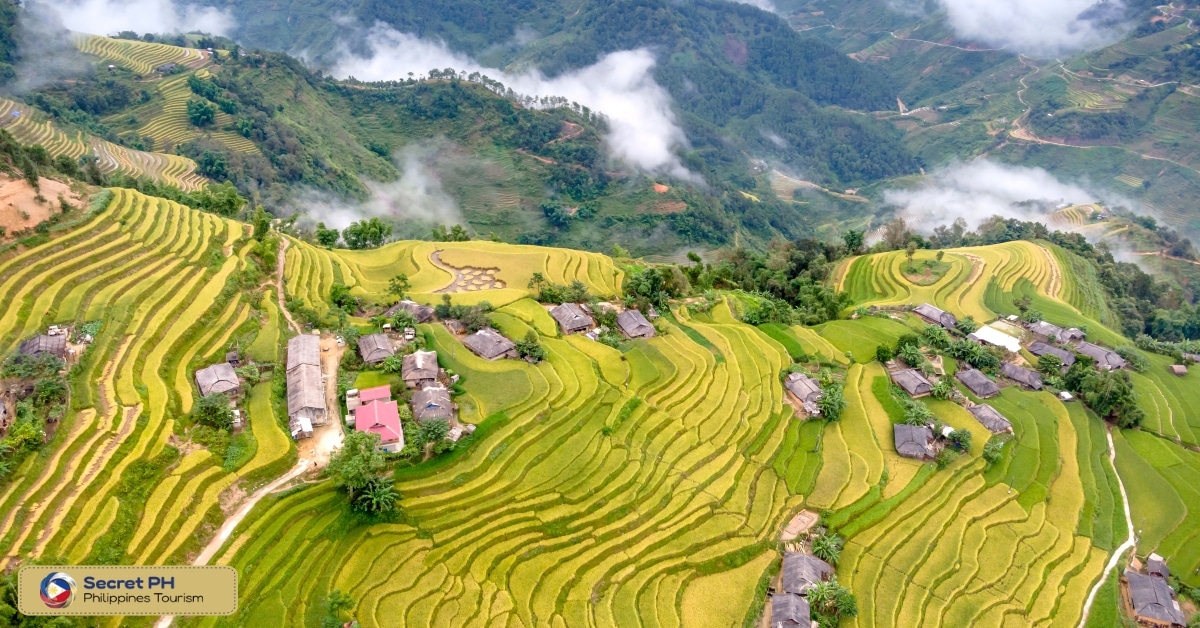
3. Go hiking in the surrounding mountains
For those looking for more of an adventurous experience, hiking in the surrounding mountains is also a great way to explore the landscape and take in some stunning views. There are several trails that vary in difficulty and length, so you’re sure to find something suitable regardless of your skill level.
4. Trek to Mount Napulawan or Lake Nitolo
For those wanting to explore further, a trek to Mount Napulawan or Lake Nitolo is also a great option. In addition to offering spectacular views from the summit of Mount Napulawan, visitors can also experience the unique biodiversity that characterizes this area.

5. Enjoy an Ifugao cultural show
For a unique cultural experience, visitors to the Banaue area can also enjoy an Ifugao cultural show. This includes traditional dances, songs, and music that will give you a deeper understanding of the culture and history of this region.
6. Visit the Bangaan View Point for a beautiful view of the terraces below
Visitors can also enjoy an Ifugao cultural show and visit the Bangaan View Point to experience a beautiful view of the terraces below. This is a great opportunity to appreciate the grandeur of these majestic structures and take in their beauty from above.
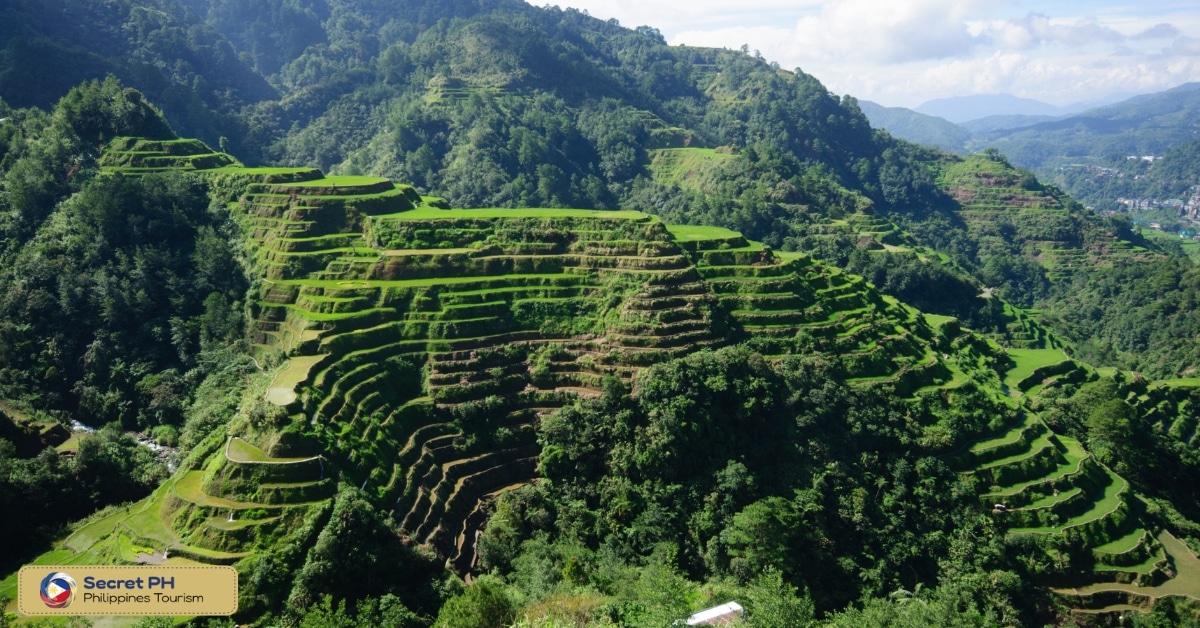
Challenges Facing the Preservation of the Banaue Rice Terraces
An engineering feat that dates back centuries, it is one of the most popular tourist attractions in the country. The preservation of the terraces is a formidable task requiring serious effort from all those involved with it, including local authorities and international organizations.
Protecting what has been recognized as a global treasure requires facing several complex challenges that come with maintaining ancient structures that were built before industrial agriculture took over much of the Philippines’ agricultural production.
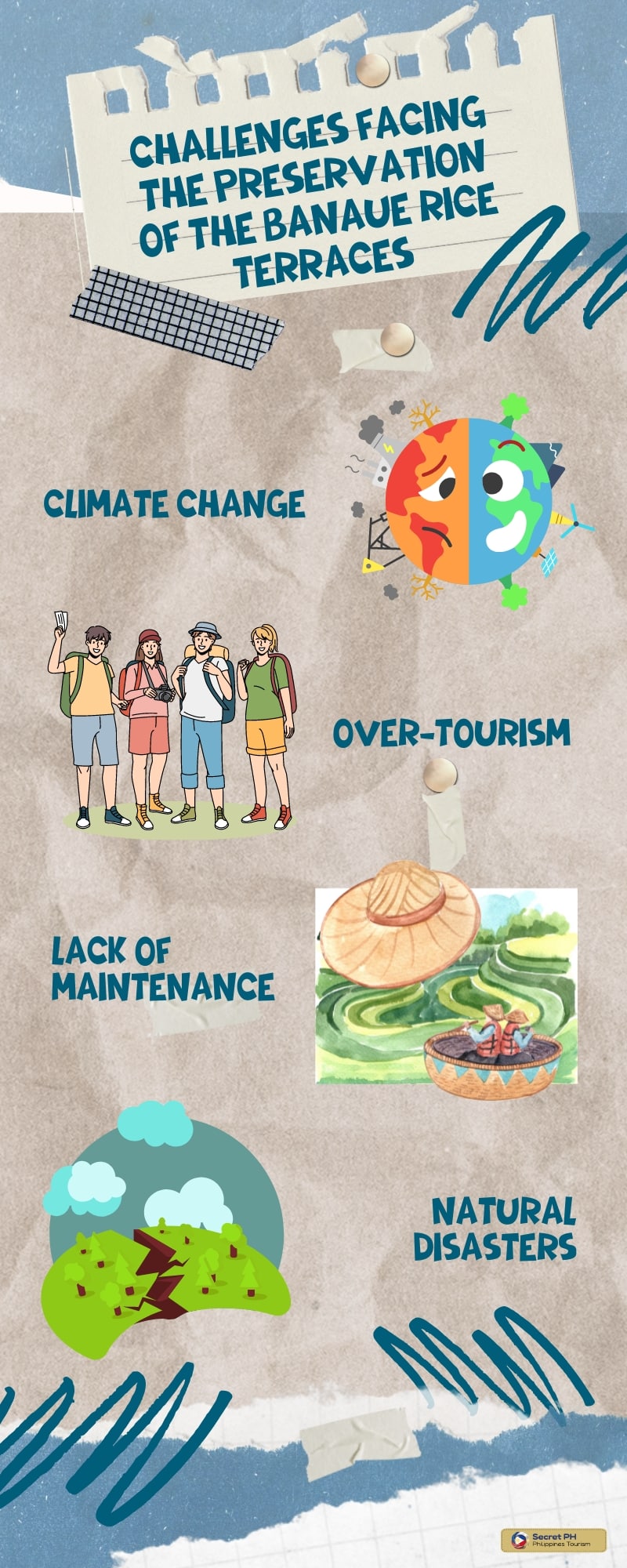
Climate Change
The Banaue Rice Terraces are situated in a high-altitude region, making them particularly vulnerable to changes in the local climate. Rising temperatures, irregular rainfall patterns, and increased erosion have had a negative impact on the health of the terraces, causing landslides and soil erosion.
Over-Tourism
The increasing number of tourists visiting the Banaue Rice Terraces has put a strain on the fragile structures. Foot traffic and the construction of tourist infrastructure have led to the degradation of the terraces, and there are concerns that further development could lead to their destruction.
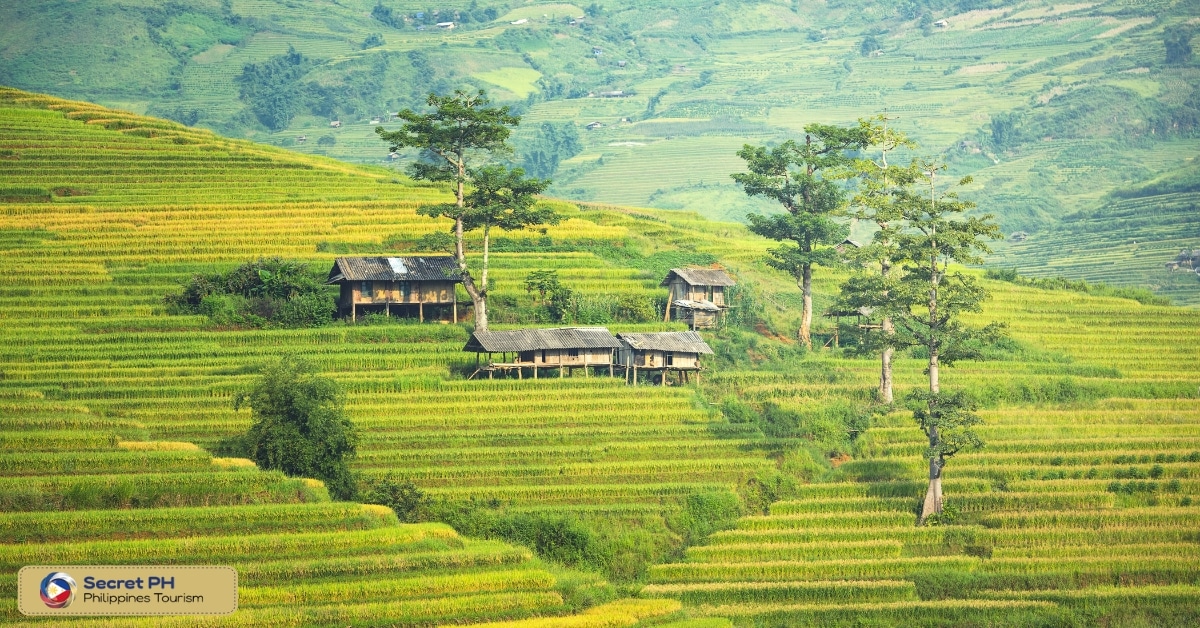
Lack of Maintenance
The terraces require constant maintenance and repair to prevent soil erosion and landslides. However, many of the terraces are in disrepair, due to a lack of resources and funding. Additionally, many of the younger generations of farmers have abandoned the traditional methods of rice farming, and there is a risk that the knowledge and skills necessary for the preservation of the terraces will be lost.
Natural Disasters
The Banaue Rice Terraces are situated in an area prone to natural disasters, including typhoons and earthquakes. These events can cause significant damage to the terraces, and the lack of resources to repair and restore them has led to their further degradation.
To preserve the Banaue Rice Terraces for future generations, it is essential to address these challenges. This may involve implementing sustainable tourism practices, providing resources for maintenance and repair, and encouraging the younger generations to continue the traditional rice-farming methods.
Overall, the Banaue Rice Terraces are a unique and invaluable cultural and natural treasure, and it is important that efforts are made to ensure their preservation for future generations to enjoy and appreciate.
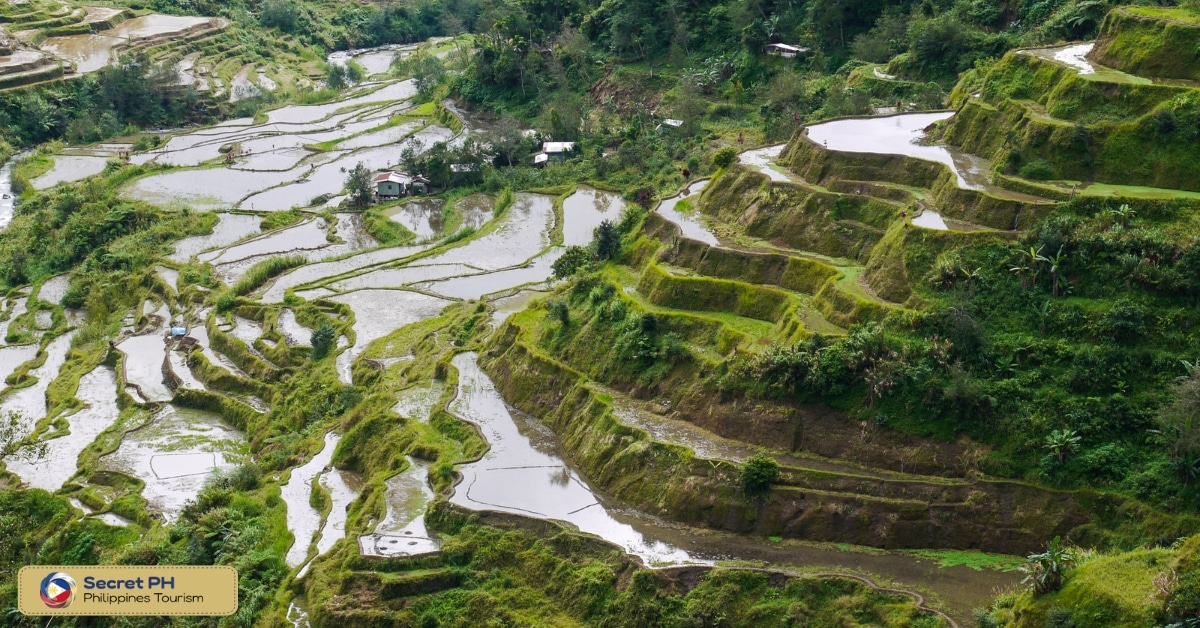
In conclusion
The Majestic Rice Terraces of Banaue is a stunning symbol of human ingenuity and natural beauty that has been paramount in the culture, heritage, and livelihoods of Northern Filipino people.
A visit to this wondrous locale is an opportunity to experience the incredible engineering feat of its creators and admire the uninterrupted stretches of terraces modified from the surface of the mountains.
The locals’ perseverance in preserving, developing, and maintaining these majestic rice terraces over 2000 years attests to the human capacity for long-term resilience and sustainable agriculture. Whether for hiking across its treeless terrain, exploring its cultural history, or basking in its incredible scenery, the Rice Terraces of Banaue is truly a treasure not to be missed.


